The Ha Giang Loop stands as Vietnam’s most iconic motorcycle journey, winding through limestone karsts, terraced rice fields, and remote ethnic villages of the country’s northernmost province. For the independent traveler seeking authentic experiences, the Ha Giang Loop solo ride offers unparalleled freedom to explore this majestic frontier at your own pace. This remote 350-kilometer circuit presents both extraordinary rewards and unique challenges that require careful preparation, especially when tackling it alone.
While group tours provide structure, the Ha Giang Loop solo ride delivers a deeper connection with the landscape and culture that has made this route legendary among adventure seekers. This comprehensive guide from Phieu Travel covers everything you need to know about safely and confidently navigating the Ha Giang Loop independently, from practical preparations to cultural insights that will enrich your journey through Vietnam’s final frontier.
1. Why Ride the Ha Giang Loop Solo?
The decision to explore the Ha Giang Loop independently rather than with a guided tour significantly shapes your entire experience. Understanding the advantages and considerations of solo travel helps determine if this approach aligns with your travel style and adventure goals.
1.1 The Unique Freedom of Solo Riding
Traveling the Ha Giang Loop alone offers unmatched autonomy. You determine when to start each day, how long to linger at viewpoints, and where to stop for impromptu photographs. Solo riders can spend an extra hour at the breathtaking Ma Pi Leng Pass without worrying about keeping up with a group, or detour to explore an intriguing village that catches their eye. This flexibility allows for a more personalized journey through Vietnam’s northern highlands, following your own rhythm rather than adhering to a predetermined schedule.
Freedom extends beyond timing to include route modifications. While the classic loop follows a standard path, solo travelers can easily adjust their course based on local recommendations, weather conditions, or personal interests. If you discover a festival in a remote village or hear about an unmarked waterfall from fellow travelers, you can immediately incorporate these experiences into your itinerary.
1.2 Deeper Connections with Locals
Without the buffer of a guide or group, solo travelers often experience more authentic interactions with Ha Giang’s diverse ethnic communities. Local residents whether Hmong, Dao, Tay, or Lolo people frequently approach solo travelers with curiosity and openness. These spontaneous encounters might lead to being invited for tea in a family home, participating in agricultural activities, or learning traditional crafts firsthand.
Solo riders also tend to rely more heavily on local guidance, creating opportunities for meaningful exchanges. When asking directions at a small restaurant or seeking advice about road conditions from a shopkeeper, these interactions often evolve into conversations about local life, traditions, and perspectives. Many solo travelers report that their most treasured memories from the Ha Giang Loop come from these unplanned human connections rather than from the spectacular scenery.
1.3 Pushing Your Limits Personal Growth on the Road
The Ha Giang Loop presents numerous challenges from navigating hairpin turns and unpredictable weather to communicating across language barriers. Facing these obstacles alone builds confidence and problem-solving abilities that extend beyond your journey. Travelers frequently describe a profound sense of accomplishment after completing the circuit independently.
Each day on the loop brings opportunities for self-reliance: maintaining your motorcycle, finding suitable accommodations, or navigating through areas with limited phone signals. These experiences foster resilience and adaptability. Many riders report that successfully navigating these challenges solo provides a psychological boost that enhances the overall experience, transforming the journey from a simple sightseeing trip into a milestone personal achievement.
Local Insight: While riding solo offers incredible freedom, consider booking your first night’s accommodation in advance. Ha Giang town can become unexpectedly busy during peak seasons, and arriving after a long journey from Hanoi without confirmed lodging adds unnecessary stress.
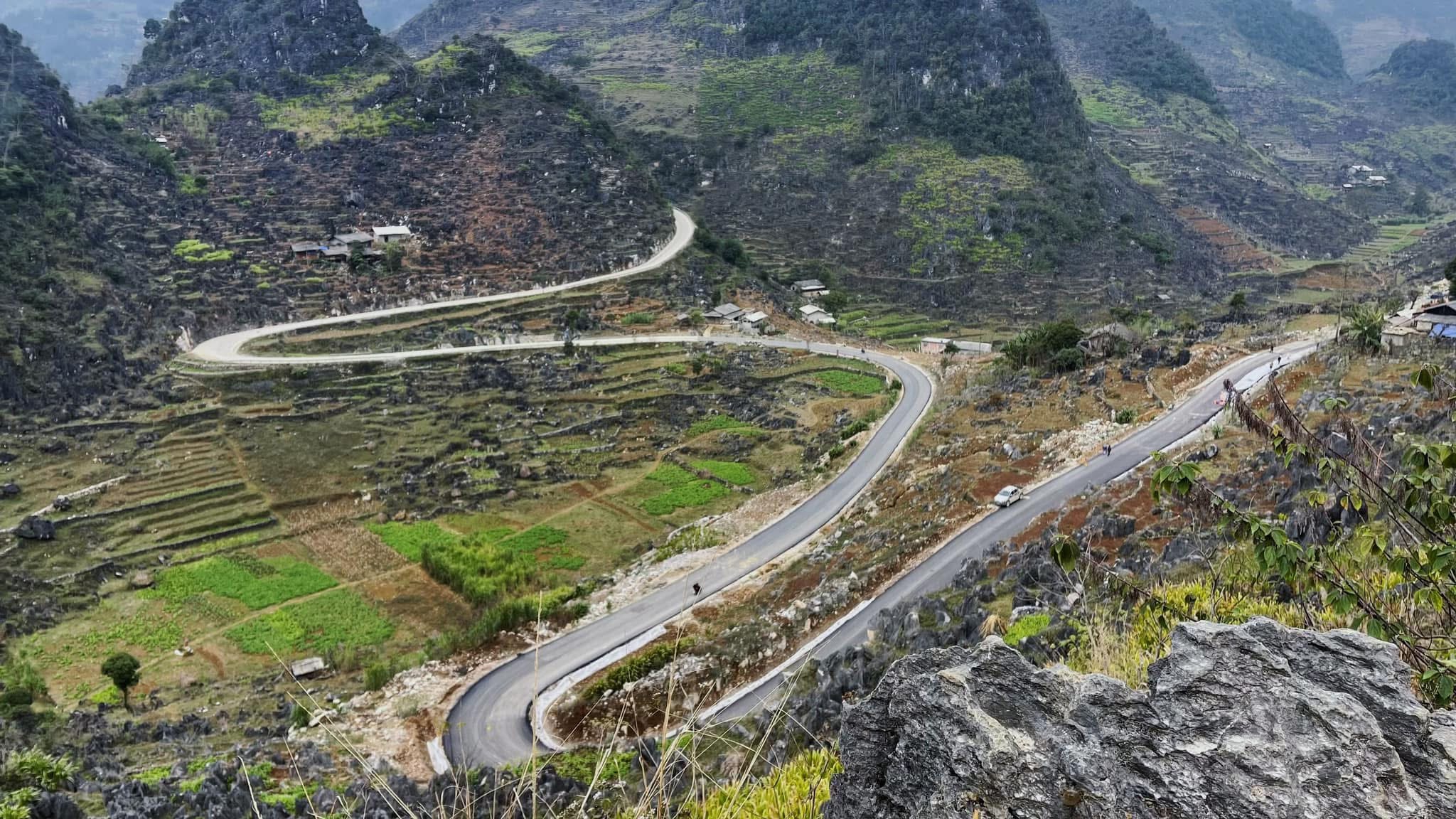
Ha Giang Loop Fines and License Requirements (16th December 2025 Guide)
2. Planning Your Solo Ha Giang Adventure
Thorough preparation forms the foundation of a successful solo journey around the Ha Giang Loop. Without a guide making decisions or handling logistics, your planning becomes essential for maximizing enjoyment while minimizing potential difficulties.
2.1 Choosing the Best Route (Clockwise or Counterclockwise)
The traditional Ha Giang Loop spans approximately 350 kilometers, typically beginning and ending in Ha Giang City. Most travelers complete the circuit in a clockwise direction, heading first toward Quan Ba and Heaven’s Gate before continuing to Yen Minh, Dong Van, Ma Pi Leng Pass, and Meo Vac. This direction encounters the most dramatic scenery later in the journey, allowing riders to build confidence on gentler roads before tackling the challenging Ma Pi Leng Pass.
Counterclockwise travel offers distinct advantages for solo riders, particularly during peak tourist seasons. This direction typically means encountering fewer tour groups at major attractions, as most guided excursions follow the clockwise route. Additionally, riding counterclockwise provides better morning light for photographing iconic landscapes like the Nho Que River from Ma Pi Leng Pass, a consideration for photography enthusiasts traveling alone.
Several alternative routes exist for riders seeking less-traveled paths. The extended loop through Du Gia adds approximately 100 kilometers but rewards travelers with stunning valleys, waterfalls, and fewer tourists. Solo riders with adequate time might consider this detour for a deeper immersion into rural Vietnamese life beyond the standard tourist circuit.
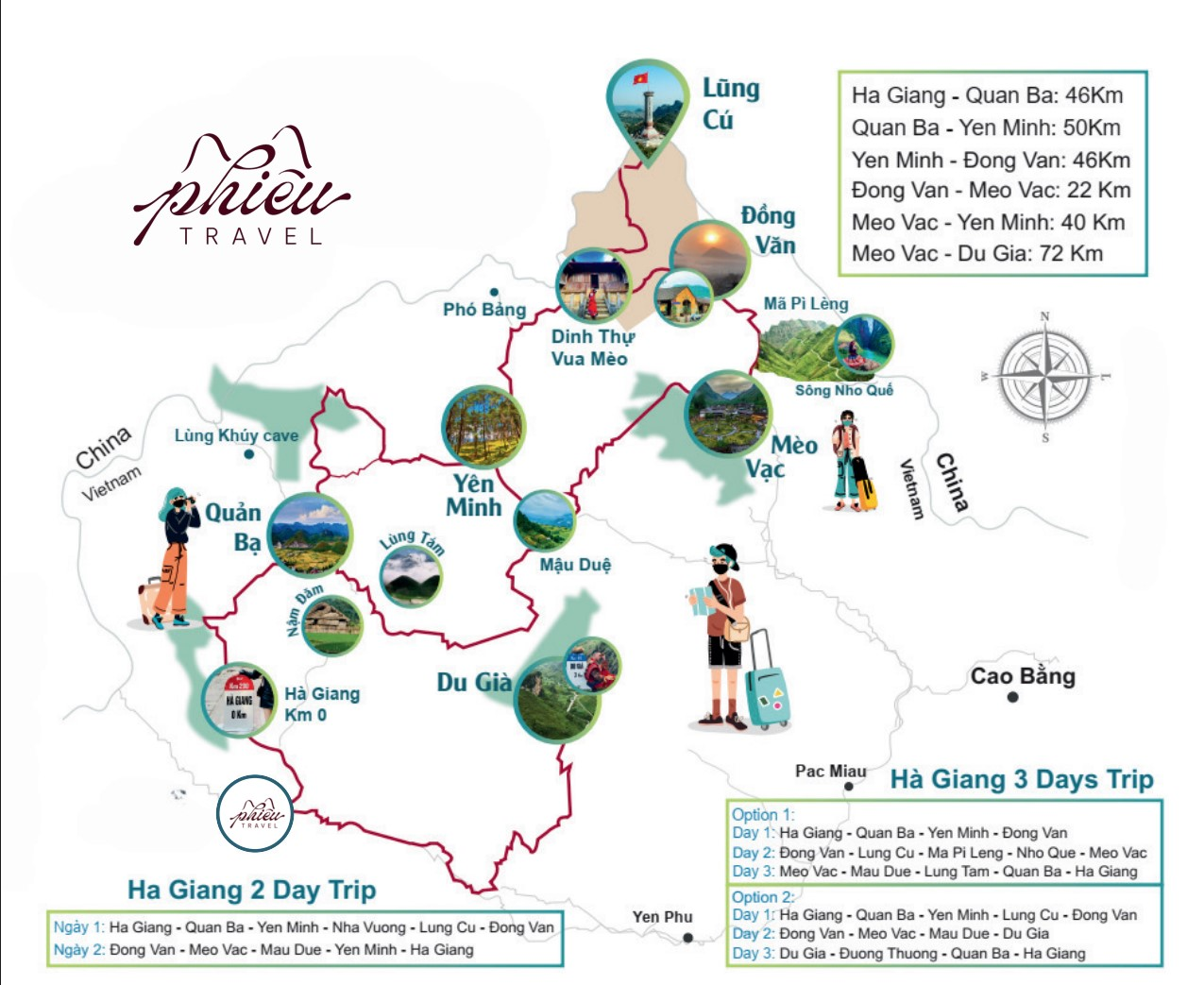
2.2 How Many Days to Allow? Itineraries for 3–5 Days
The minimum recommended duration for safely completing the Ha Giang Loop solo is three days. This timeline allows approximately 100-120 kilometers of riding daily manageable distances considering the winding mountain roads and frequent stops for photographs and rest. A three-day itinerary typically includes overnight stays in Dong Van and Meo Vac, hitting major highlights while minimizing exhaustion.
For a more relaxed experience, four days provides breathing room to explore ethnic villages, participate in local activities, and recover from demanding sections of road. A typical four-day solo itinerary might include overnight stays in Yen Minh, Dong Van, and Meo Vac, with shorter daily distances of 70-90 kilometers allowing for deeper exploration at each stop.
Five days represents the ideal timeframe for solo travelers wanting comprehensive immersion. This duration accommodates unexpected discoveries, weather delays, or recovery from motorcycle fatigue. A five-day journey might include the Du Gia extension or allow full days in culturally significant areas like Dong Van, where Sunday markets offer authentic insights into highland life rarely experienced on rushed itineraries.
2.3 Timing Your Ride: Seasons, Weather, and Festivals
The optimal time for solo exploration of the Ha Giang Loop falls between October and April, when rainfall is minimal and visibility is generally excellent. Within this window, October-November offers spectacular scenery with terraced fields transitioning from vibrant green to golden yellow during harvest season. Temperatures during these months remain comfortable, typically ranging from 15-25°C (59-77°F) during daytime hours.
December through February brings cooler temperatures, especially at higher elevations where morning temperatures can drop below 10°C (50°F). Solo travelers during winter months should pack appropriate cold-weather gear but will be rewarded with crystal-clear mountain views and fewer fellow travelers. The spring months (March-April) showcase blooming flowers across the highlands, including stunning plum and peach blossoms.
Avoid the rainy season from May through September if possible, particularly for solo journeys. Heavy rainfall creates hazardous road conditions, including mud slides and reduced visibility, while persistent fog can obscure the spectacular views that make the loop worthwhile. For solo riders, these weather challenges significantly increase risk without the safety net of traveling companions.
Travel Tip: Check the timing of local festivals before finalizing your solo journey. Events like the Khau Vai Love Market Festival (March/April) or Hmong New Year celebrations (December/January) offer extraordinary cultural experiences but also mean more competition for accommodations.

The Best Time to Visit Ha Giang: A Seasonal Guide to Flowers & Festivals
3. Getting Ready: Paperwork, Permits, and Bike Rental
Proper preparation regarding legal requirements and equipment ensures your solo journey remains focused on enjoyment rather than administrative complications. Without a tour company handling logistics, understanding these essentials becomes particularly important.
3.1 Documents & Permits Every Solo Rider Needs
Vietnam requires an International Driving Permit (IDP) alongside your home country’s valid driver’s license to legally operate a motorcycle. Obtain your IDP before arriving in Vietnam, as it cannot be issued within the country. This document should specifically include motorcycle endorsement, typically category A1 or equivalent, depending on your country of origin.
For the Ha Giang region specifically, travelers technically need a special permit due to its border proximity. In practice, most motorbike rental shops in Ha Giang City handle this documentation as part of their rental package, typically charging 200,000-450,000 VND (approximately $9-20 USD). As a solo traveler, confirm this arrangement before finalizing your rental to avoid potential complications at police checkpoints along the route.
Always carry your passport, visa documentation, travel insurance details, and photocopies of these documents stored separately from the originals. For solo riders, having digital copies stored in cloud services provides additional security if physical documents are lost or damaged. Travel insurance with specific motorcycle coverage is non-negotiable for solo adventurers, as medical evacuation from remote areas can be extraordinarily expensive.
3.2 Choosing and Renting the Right Motorbike
The most common and recommended motorcycles for the Ha Giang Loop are semi-automatic scooters (Honda Wave, Honda Blade) or fully-automatic scooters (Honda Vision, Yamaha Nouvo) with engine capacities between 110cc and 125cc. These machines offer adequate power for the mountain passes while remaining manageable for riders with limited experience. For solo travelers, these smaller bikes also provide easier handling on challenging sections.
More experienced riders might consider 150cc manual motorcycles like the Honda XR or Yamaha Exciter, which offer superior power on steep inclines and greater stability on rough roads. However, manual transmission requires confidence in clutch control, particularly on the Loop’s hairpin turns and steep gradients. Solo riders should honestly assess their skill level rather than overestimate their abilities.
Rental prices typically range from 150,000 to 400,000 VND per day ($7-18 USD) depending on the motorcycle type, rental duration, and negotiation skills. Established rental companies in Ha Giang City offer better-maintained vehicles with 24-hour support services critical for solo travelers who might face mechanical issues in remote areas. Phieu Travel, QT Motorbikes, Jasmine Motorbike Rental, and Ha Giang Motorbike Rental are reputable options frequently recommended for solo travelers.

3.3 Smart Rental Tips for Solo Travelers
Before accepting any motorcycle, conduct a thorough inspection documented with date-stamped photographs. Check tire tread depth, brake responsiveness, headlights, turn signals, horn functionality, and mirror adjustments. As a solo rider, your safety depends entirely on your vehicle’s reliability, making this inspection more critical than for those traveling in groups where support is available.
Request essential tools and spare parts, particularly for longer solo journeys. A basic kit should include a spark plug, fuse, tire pressure gauge, rain poncho, and basic wrenches. Understand how to perform simple repairs like fixing a puncture or adjusting chain tension, as roadside assistance is virtually non-existent in remote sections of the loop.
Negotiate rental terms carefully, focusing on breakdown policies rather than merely on price. Clarify what happens if mechanical problems occur far from Ha Giang City. The best rental companies offer motorcycle replacement services in major towns along the loop or will arrange transportation for disabled vehicles. For solo travelers, this support network provides crucial peace of mind that justifies potentially higher rental rates.
Local Insight: When renting from Phieu Travel or other reputable providers, request a local SIM card with data service specifically optimized for northern mountain regions. Regular urban SIM cards often have poor coverage in Ha Giang’s remote areas, leaving solo travelers without critical communication capabilities.
Ready for an unforgettable adventure? Book Now Ha Giang Loop Tour with Phieu Travel and explore northern Vietnam like never before!
Book Now Ha Giang Loop Tour
4. Safety First: Navigating the Loop Alone
Safety considerations take on heightened importance when riding the Ha Giang Loop solo. Without companions to assist during difficulties, understanding potential challenges and preparation strategies becomes essential for a positive experience.
4.1 Road Hazards and Weather Challenges
The Ha Giang Loop features numerous sections with unpaved surfaces, loose gravel, and occasional rockfalls, particularly after rainfall. Solo riders should maintain slower speeds than they might in groups, allowing extra reaction time for unexpected obstacles. The steepest sections, especially around Ma Pi Leng Pass, feature dramatic drop-offs with minimal or non-existent guardrails, demanding full concentration.
Weather conditions can change rapidly in the northern highlands. Morning fog frequently reduces visibility to less than 20 meters, particularly on mountain passes, while afternoon storms can transform dry roads into slippery hazards within minutes. Solo travelers should build flexibility into their daily schedule, allowing for delays or early stops if conditions deteriorate. The unofficial rule among experienced riders: if you can’t see clearly, don’t ride.
Traffic hazards include overloaded trucks on narrow roads, local motorbikes carrying impossible loads, and domestic tourists unfamiliar with mountain driving. As a solo rider, maintain defensive positioning, particularly on blind corners where oncoming traffic might occupy your lane. Always use your horn approaching curves, following local practice to alert others of your presence.
4.2 Navigating with (and without) Signal
Mobile coverage varies dramatically along the Ha Giang Loop. Major towns like Dong Van and Meo Vac offer reliable connections, while remote mountain sections often have no service whatsoever. Download offline maps through applications like Maps.me or Google Maps before departure. These tools allow GPS navigation without requiring data connections, essential when finding accommodations or tracking your route through unmarked sections.
Physical maps remain valuable backups for solo travelers. Most motorcycle rental shops provide basic printed maps of the loop with major landmarks indicated. Orient yourself using kilometer markers along the main roads, which locals reference when giving directions. Roads QL4C and QL34 form the primary route, with clear signage at major junctions.
Establish a communication protocol with someone outside your journey. As a solo traveler, regularly check in with a contact when you reach areas with signal, providing your location and next destination. Set clear expectations about when they should become concerned if they don’t hear from you, typically 24-48 hours depending on your itinerary through areas with known signal limitations.
4.3 Handling Breakdowns or Emergencies as a Solo Rider
Mechanical issues present particular challenges for solo riders. Basic troubleshooting skills can prevent minor problems from becoming emergencies. Learn to identify symptoms of common issues: sputtering engines often indicate fuel or spark plug problems, while grinding sounds when braking suggest immediate attention is required. Carry the rental shop’s contact information and know which towns along your route have basic motorcycle repair services.
Medical emergencies require advance planning. The largest hospitals are in Ha Giang City, with limited facilities in district towns. Carry a comprehensive first aid kit including antiseptic, bandages, pain relievers, anti-diarrheal medication, and any personal prescriptions. Program emergency contact numbers into your phone, including your country’s embassy in Vietnam and your travel insurance’s emergency assistance line.
If stranded, local communities generally prove helpful despite language barriers. Vietnamese hospitality extends even to remote areas, where residents often assist travelers in difficulty. Learn basic Vietnamese phrases for requesting help, and carry a translation card explaining potential medical conditions or allergies. As a last resort, passing tour groups can relay messages or provide transportation to the nearest town.
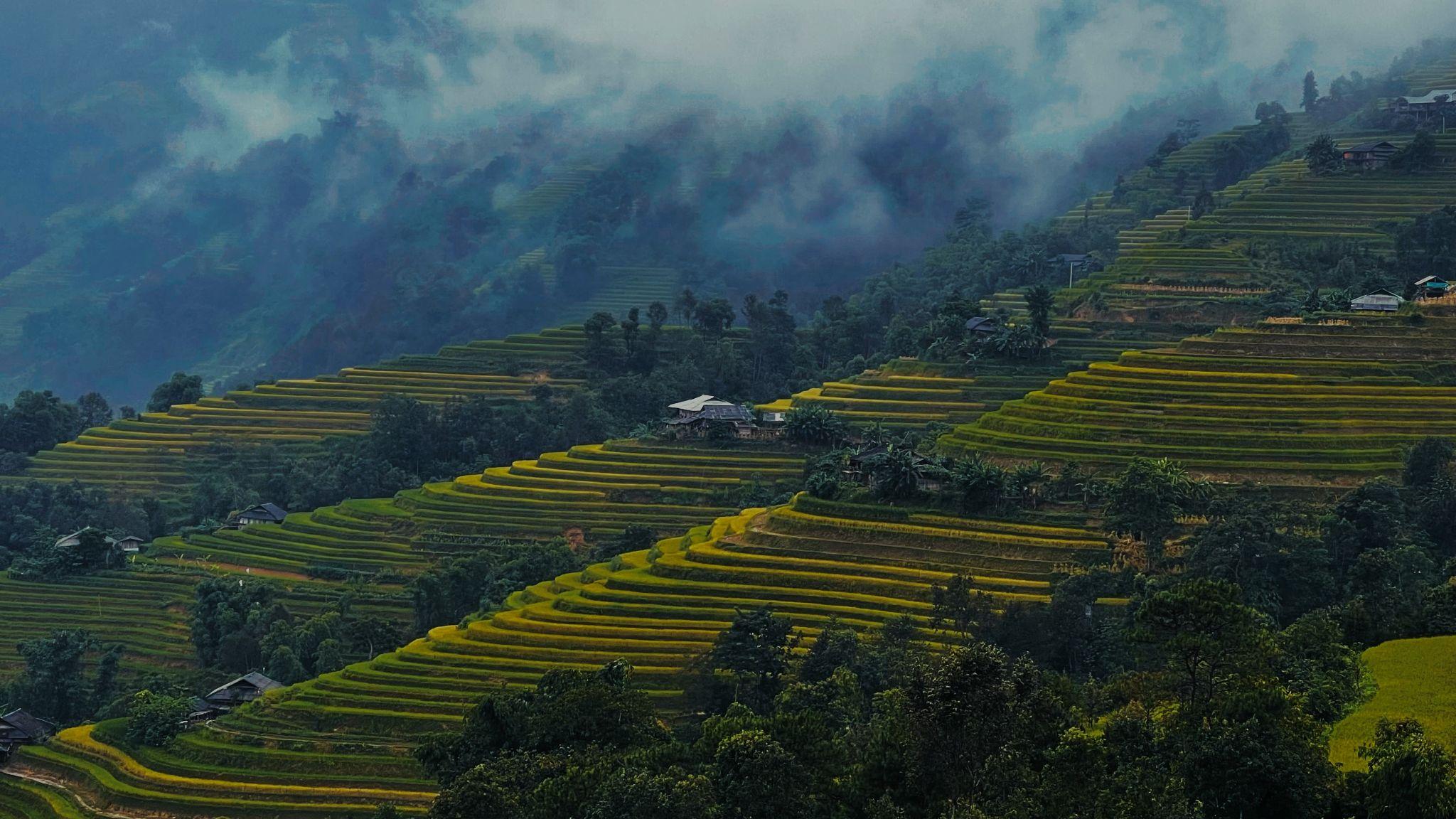
5. Where to Stay and What to Eat Along the Loop
Accommodation and dining choices significantly impact your solo Ha Giang experience. Understanding options and making informed decisions ensures comfort and authentic cultural immersion throughout your journey.
5.1 Booking Accommodation: Homestays, Hostels, and What’s Best for Solo Travelers
Homestays represent the most authentic accommodation option along the Ha Giang Loop, offering insights into local lifestyles while providing basic comfort. These family-run establishments typically offer communal sleeping arrangements on mattresses with mosquito nets, shared bathrooms, and home-cooked meals. For solo travelers, homestays facilitate connections with other adventurers and local families, creating natural social opportunities that counter the isolation sometimes experienced when traveling alone.
Hostels and guesthouses have increased in recent years, particularly in Dong Van and Meo Vac. These establishments offer private rooms or dormitory-style accommodations with Western-style bathrooms and often include common areas where solo travelers can exchange information and experiences. Nomad Hostel in Dong Van and Rocky Plateau in Meo Vac specifically cater to independent travelers with English-speaking staff and motorbike parking facilities.
Small hotels provide greater privacy and comfort, though with less cultural immersion. These properties, concentrated in district towns, typically feature private rooms with ensuite bathrooms, reliable hot water, and secure parking. While more expensive (typically 300,000-700,000 VND/$13-30 USD per night), they offer welcome respite after challenging riding days, particularly in adverse weather when proper rest becomes essential for safety.
5.2 Connecting Over Meals: What and Where to Eat
Local cuisine along the Ha Giang Loop features distinct highland flavors, with each ethnic group contributing unique specialties. Don’t miss thắng cố (a Hmong stew made with horse meat and herbs), smoked pork, five-color sticky rice, and buckwheat cakes. Solo diners often find communal dining settings at homestays or local restaurants, where shared tables facilitate conversations with fellow travelers and locals alike.
Market meals provide both cultural experiences and fresh ingredients. Towns like Dong Van and Meo Vac host daily markets where food vendors serve simple, delicious meals from morning until early afternoon. For solo travelers, these bustling environments offer natural opportunities to observe daily life while enjoying authentic, inexpensive cuisine typically costing 30,000-50,000 VND ($1.30-2.20 USD) per dish.
Street food and small restaurants appear regularly along main roads, often identifiable by plastic chairs and simple signs. While menus rarely appear in English, pointing at ingredients or dishes other customers are enjoying works effectively. Solo travelers should look for busy establishments with high turnover, indicating both food safety and quality. Carrying basic snacks provides security during stretches between towns, particularly important when traveling alone.
5.3 Budgeting Your Nights: Costs, Cash, and Hidden Fees
Accommodation costs vary significantly by type and location. Homestays generally charge 150,000-250,000 VND ($7-11 USD) per person, usually including dinner and breakfast. Hostels range from 100,000-200,000 VND ($4-9 USD) for dormitory beds to 250,000-400,000 VND ($11-17 USD) for private rooms. Small hotels typically start at 300,000 VND ($13 USD) and increase with comfort level and location.
Cash management requires planning, as ATMs exist only in Ha Giang City, Dong Van, and occasionally in Meo Vac, with service reliability varying widely. Solo travelers should carry sufficient Vietnamese dong for their entire journey, with a recommended 500,000-700,000 VND ($22-30 USD) daily budget covering accommodation, meals, fuel, and incidentals. Distribute cash in multiple secure locations rather than carrying it all together.
Hidden costs frequently surprise first-time visitors. Many accommodations charge extra for hot showers, parking security, or laundry services. Solo travelers often encounter single-person supplements at homestays designed for group economics. Additional expenses include entrance fees at viewpoints (typically 10,000-50,000 VND/$0.45-2.20 USD), roadside coffee stops, and unexpected motorcycle maintenance. Building a 20% buffer into your budget provides security against these unplanned expenses.
Travel Tip: As a solo traveler arriving late in smaller towns, confirm accommodation availability before the sun sets. In remote areas like Lung Tam or Du Gia, options become extremely limited after dark, potentially leaving you without suitable lodging.
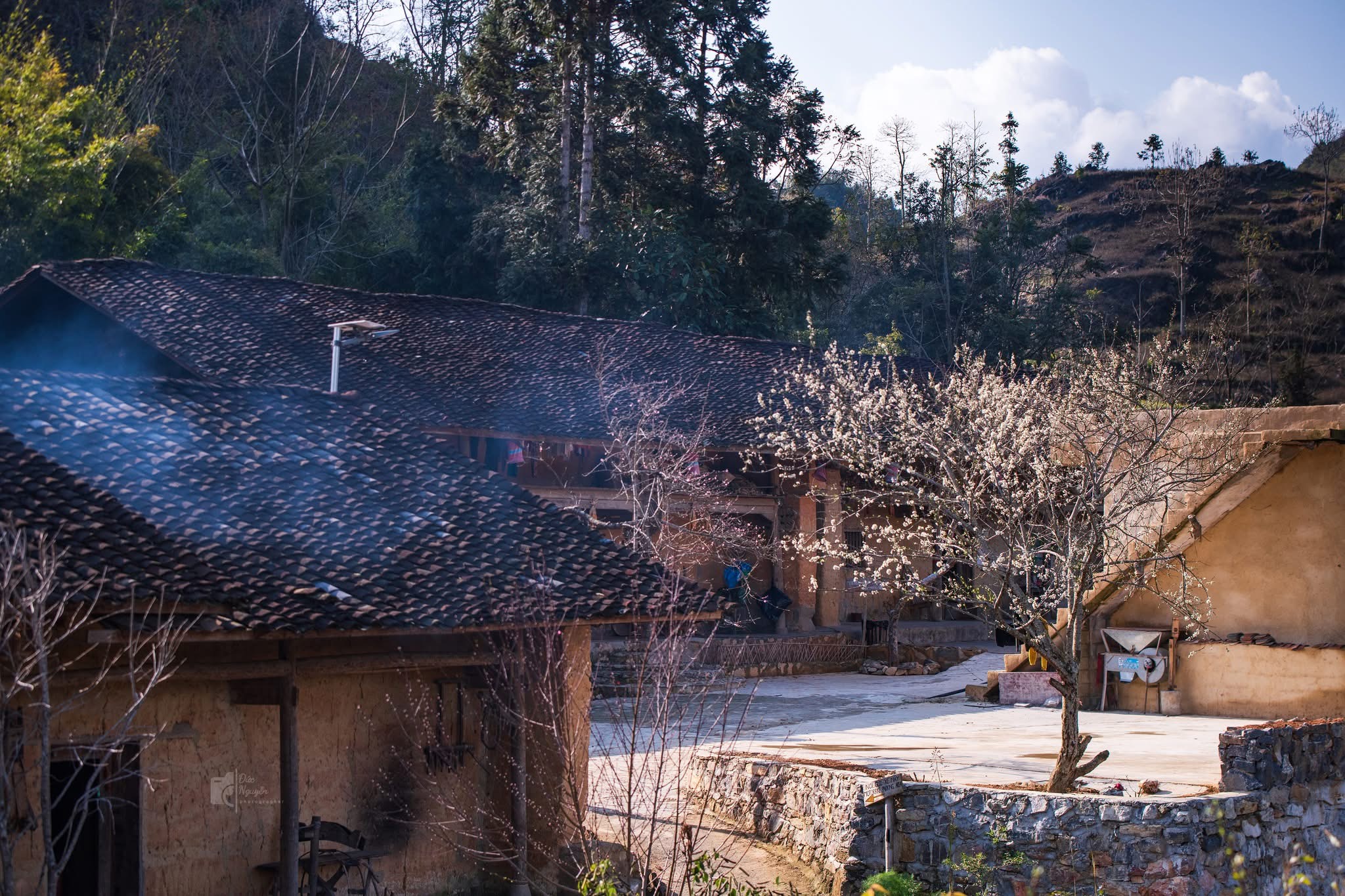
6. Local Culture & Offbeat Experiences
The Ha Giang Loop’s cultural richness offers solo travelers unique opportunities for meaningful engagement beyond the spectacular scenery. Understanding and respectfully navigating these cultural dimensions enhances both your experience and your contribution to local communities.
6.1 Respectful Interactions with Ethnic Groups
The Ha Giang province hosts 22 different ethnic minorities, including H’mong, Dao, Tày, Nùng, Lô Lô, and Pà Thẻn communities, each with distinct cultural practices, languages, and traditional dress. When photographing local people, always establish eye contact and request permission through gestures if language barriers exist. Offering small payments for photographs remains controversial instead, purchasing handicrafts or local products creates more sustainable economic exchange.
Religious and spiritual beliefs vary among ethnic groups, with ancestor worship, animism, and localized practices often combined with Buddhism or Christianity. When visiting sacred sites, observe local behaviors regarding appropriate clothing, removing shoes, or gender-specific areas. Solo travelers might encounter rituals or ceremonies in villages; maintain respectful distance unless explicitly invited to participate, and never interrupt religious activities for photographs.
Learn basic greetings in Vietnamese (“Xin chào”) and, if possible, phrases specific to major ethnic groups like the H’mong. Simple efforts at communication demonstrate respect and often open doors to more meaningful interactions. Solo travelers who show genuine interest in local cultures frequently receive spontaneous invitations to family gatherings, agricultural activities, or cultural demonstrations rarely accessible to larger groups.
6.2 Secret Scenic Stops and Photo Spots
Beyond the famous Ma Pi Leng Pass viewpoints, numerous lesser-known locations offer equally spectacular vistas without crowds. The ridge road between Lung Tam and Du Gia provides panoramic views across terraced valleys, particularly stunning during early morning hours when mist clings to the mountainsides. Solo travelers can safely pull over at multiple unmarked viewpoints along this stretch, often having these breathtaking scenes entirely to themselves.
The Lung Cu flag tower area contains several hidden paths leading to expansive views beyond the main tourist site. From the tower’s parking area, narrow trails extend eastward through small woods, emerging at uncrowded vantage points overlooking the Chinese border landscape. Early afternoon light creates optimal photography conditions here, with mountains casting dramatic shadows across the valley floor.
Photographers seeking authentic village scenes should explore the small roads branching from the main loop between Yen Minh and Dong Van. These narrow paths lead to traditional settlements like Pho Bang and Pho Cao, where stone houses and agricultural practices remain largely unchanged for generations. Morning activities (7:00-9:00 AM) offer the most vibrant scenes of daily life, from livestock being led to pasture to women preparing indigo dye.
6.3 How to Join Village Festivals or Events
Seasonal festivals punctuate the agricultural calendar throughout Ha Giang, with major celebrations including the Gau Tao Festival (H’mong New Year, December-January), Lồng Tồng (field-blessing ceremonies, February-March), and the Khau Vai Love Market (late April or early May). Research these dates when planning your journey, as witnessing these events provides extraordinary cultural insights typically inaccessible to standard tourists.
Local markets operate on five-day rotating schedules in different towns, with Sunday markets in Dong Van and Meo Vac being the most famous. However, smaller weekly markets in villages like Lung Tam (Wednesdays) or Phố Cáo (Saturdays) offer more authentic experiences with fewer tourists. Solo travelers can easily adjust their itineraries to coincide with these gatherings, which typically operate from early morning until early afternoon.
To participate respectfully in local events, observe before engaging. Spontaneous invitations to join meals, rice wine ceremonies, or dances frequently extend to solo travelers showing genuine interest. Accept offers of food or drink when possible, as refusal can appear impolite. If invited to homes during celebrations, small gifts like tea, fruit, or candies for children make appropriate tokens of appreciation without creating problematic economic dependencies.
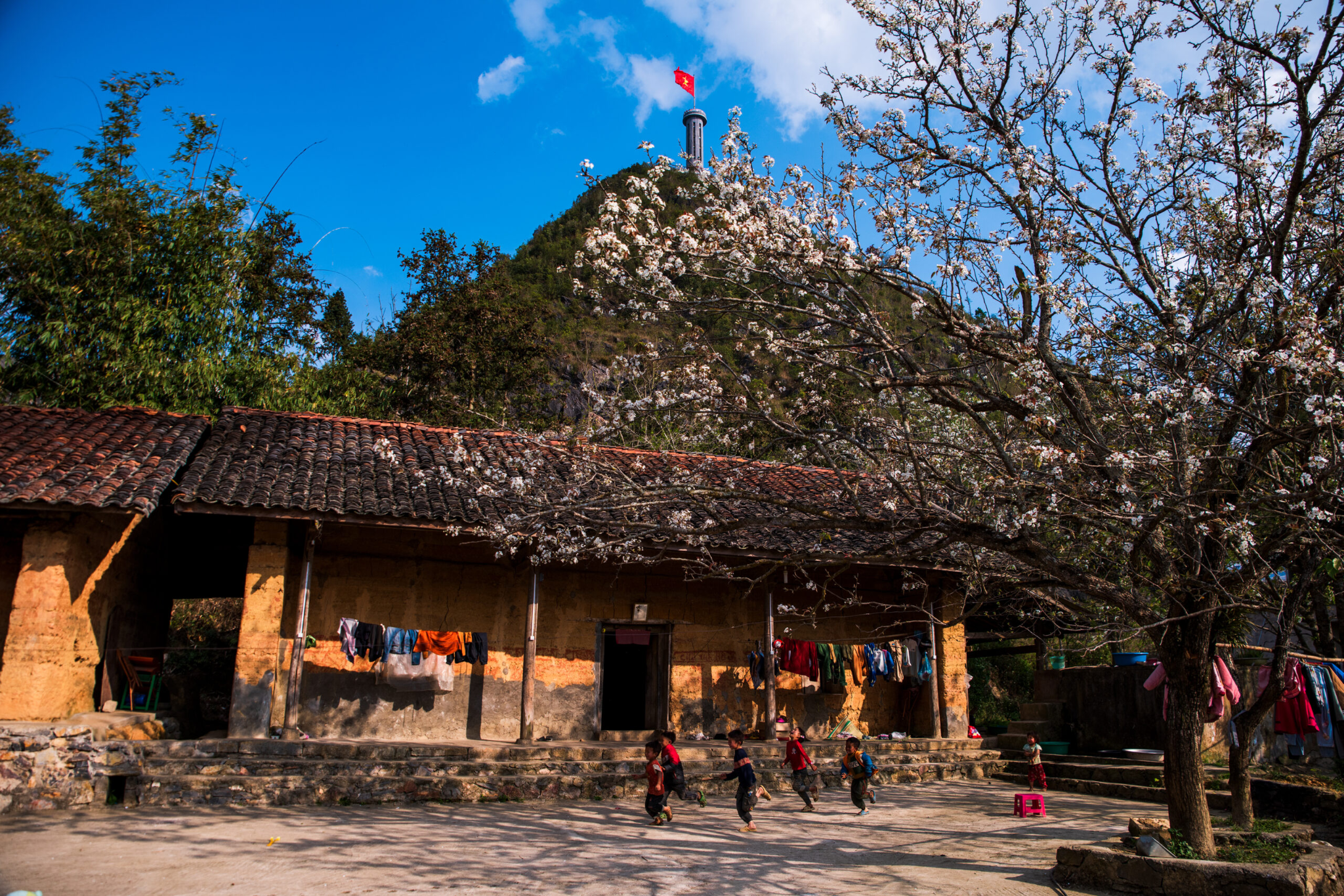
7. Essential Packing & Solo Travel Hacks
Traveling solo through Ha Giang’s varying conditions demands strategic packing. Without companions to share resources or equipment, your preparation must be comprehensive yet practical for motorcycle transportation.
7.1 Packing for Four Seasons in One Day
Ha Giang’s mountain climate can shift dramatically within hours, requiring layering strategies rather than single heavy garments. Essential clothing includes moisture-wicking base layers, a mid-weight fleece or softshell jacket, waterproof outerwear, and quick-drying pants. Temperatures at high elevations can drop below 10°C (50°F) even in summer months, while afternoon sun in valleys can exceed 30°C (86°F).
Proper riding gear significantly enhances safety and comfort. At minimum, pack a quality helmet (preferably full-face), riding gloves, long sleeves, and closed shoes with ankle protection. Add a high-visibility vest for foggy conditions and waterproof shoe covers for unexpected rain. Solo riders should prioritize safety equipment over other items, as injury risks increase without companion assistance.
Sun and cold protection deserves special attention. The highland sun at 1,500+ meters elevation causes rapid burning, while wind chill on mountain passes amplifies cold temperatures. Pack high-SPF sunscreen, lip protection, sunglasses, and a neck buff that can be configured as a face mask, sun guard, or additional warmth layer depending on conditions. These multipurpose items maximize protection while minimizing packing volume.
7.2 Gadgets, Gear, and Navigation Tools
Technology supports solo navigation while enhancing safety. Essentials include a smartphone with offline maps, a portable power bank (10,000mAh minimum), and a waterproof phone case or bag. Consider a handlebar phone mount for easier navigation, but secure your device with additional tethering as mountain roads can dislodge standard mounts.
Photography equipment requires protection from dust, vibration, and potential falls. Padded camera bags designed for motorcycle travel offer superior protection over standard backpacks. For solo travelers, action cameras with handlebar or helmet mounts capture experiences while keeping hands free for riding. Memory cards and batteries should be stored in waterproof cases and backed up regularly when accommodation offers reliable WiFi.
Safety and repair tools specific to solo travel include a headlamp with spare batteries (essential for unexpected night riding or power outages), a compact multi-tool, zip ties, duct tape, and a basic first-aid kit. Add a small tire pressure gauge, spark plug wrench sized for your specific motorcycle, and chain lubricant for longer journeys. These items address common issues that could otherwise strand a solo rider in remote areas.
7.3 Staying Healthy and Energized on the Road
Hydration and nutrition planning prevents fatigue that compromises riding safety. Carry a refillable water bottle of at least one liter, refilling at restaurants and accommodations rather than purchasing single-use plastic bottles. Electrolyte tablets or powders help prevent dehydration, particularly important during strenuous mountain riding. Solo travelers should establish regular drinking habits even when not feeling thirsty.
Maintain energy levels with portable, non-perishable snacks like nuts, dried fruit, energy bars, and local Vietnamese treats like bánh đậu xanh (mung bean cakes). These provisions become crucial when restaurants are scarce or when unexpected delays extend planned riding times. Solo travelers should always carry sufficient food for an additional half-day beyond their intended schedule.
Prevent common health issues that could derail a solo journey. Pack medication for digestive problems, headaches, allergies, and any personal prescriptions in clearly labeled, waterproof containers. Add hand sanitizer, antibacterial wipes, and toilet paper, as remote restroom facilities often lack basic supplies. For women travelers, feminine hygiene products remain difficult to find outside major towns, necessitating advance planning and adequate supplies.
Local Insight: While riding, local transportation trucks often serve as informal guides. If you encounter a large truck moving at a controlled speed through a difficult section, maintaining a safe distance behind it can provide guidance on navigating challenging roads while the truck’s size encourages oncoming vehicles to yield appropriate space.

What to Pack for the Ha Giang Loop (Ultimate Packing Guide 2025)
8. Ready for Adventure? Start Your Ha Giang Journey with Phieu Travel
Planning your solo Ha Giang adventure combines independence with appropriate support systems. Understanding available resources ensures you maintain autonomy while accessing assistance when truly needed.
8.1 Planning Help for Solo Riders
Phieu Travel specializes in supporting independent travelers throughout the Ha Giang region, offering flexible services designed specifically for solo adventurers. Their pre-trip consultation includes personalized route planning based on your riding experience, time constraints, and specific interests. This approach ensures your itinerary matches your capabilities while incorporating both iconic landmarks and hidden gems suited to solo exploration.
Documentation assistance removes administrative hurdles that often challenge independent travelers. Phieu Travel can arrange motorcycle permits, provide template emergency contact cards in Vietnamese/English, and offer guidance on insurance requirements specific to solo riding in remote areas. These services streamline preparation without compromising the independent nature of your journey.
For first-time visitors to Vietnam or those with limited riding experience, Phieu Travel offers optional orientation rides in less challenging terrain before beginning the actual loop. This service helps solo travelers acclimate to local traffic patterns, motorcycle handling, and basic Vietnamese road signs while building confidence for more demanding mountain sections.
8.2 Authentic Experiences Await
Solo travelers through Phieu Travel gain access to a network of family homestays and local experiences typically unavailable through standard booking platforms. These curated connections ensure authentic cultural immersion while maintaining basic comfort standards important for rest and recovery. Solo guests often receive personalized welcomes, including demonstrations of local crafts or food preparation that larger groups might not experience.
Photography enthusiasts benefit from Phieu Travel’s detailed guides to optimal shooting locations based on time of day, seasonal considerations, and current road conditions. This specialized knowledge helps solo travelers efficiently capture Ha Giang’s spectacular landscapes without wasting time searching for optimal vantage points or arriving at viewpoints during unfavorable lighting conditions.
Cultural experiences arranged through local partners include options like traditional textile workshops, ethnic minority language lessons, or agricultural activities scheduled around your independent riding itinerary. These opportunities provide structured interaction points within your solo journey, creating meaningful connections without the constraints of continuous group travel.
8.3 Book with Local Experts Embrace the Real Ha Giang
Phieu Travel’s foundation in local expertise ensures solo travelers receive current, accurate information reflecting seasonal changes and recent infrastructure developments. Their team regularly traverses the entire loop, updating condition reports on road surfaces, construction areas, and seasonal hazards that might not appear in standard guidebooks or online resources.
Safety systems specifically designed for solo travelers include regular check-in protocols, emergency contact arrangements, and coordination with accommodations along your route. These systems operate discreetly in the background, preserving your sense of independence while providing critical support if unexpected situations arise in remote areas with limited communication options.
Begin your solo Ha Giang adventure by visiting Phieutravel.com to explore customizable itineraries specifically designed for independent riders. Their booking platform allows you to select only the services you need whether simply motorcycle rental with emergency support or a comprehensive package including pre-arranged accommodations and cultural experiences. This flexibility ensures your journey maintains the authentic solo experience you seek while providing appropriate local support.
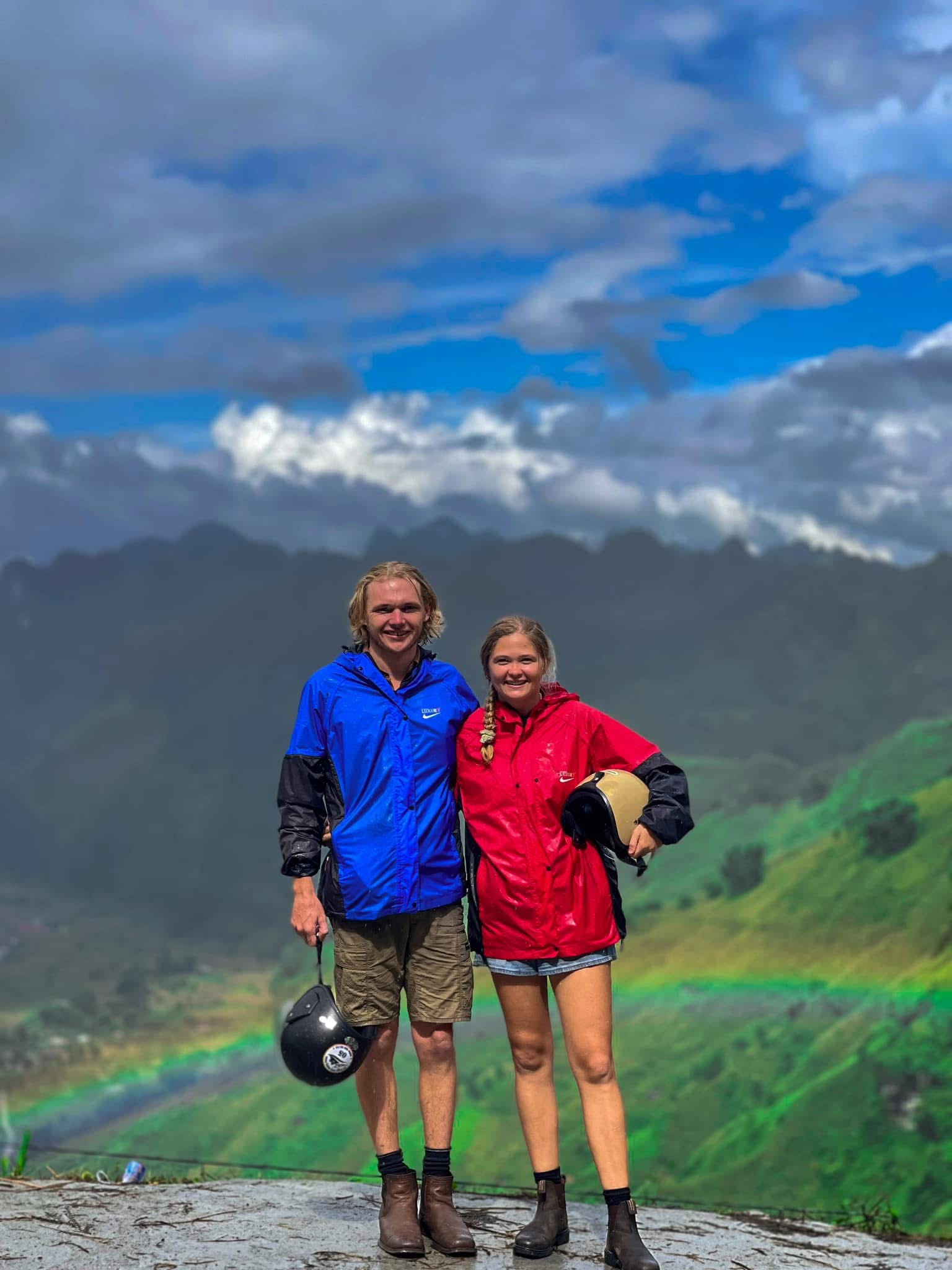
Riding the Ha Giang Loop solo transforms a simple motorcycle journey into a profound personal adventure through Vietnam’s most spectacular landscapes. This independent approach offers unmatched freedom to experience northern Vietnam’s cultural diversity and breathtaking scenery at your own pace, creating deeper connections with both the environment and local communities. While challenging, proper preparation regarding routes, equipment, safety measures, and cultural awareness significantly enhances both enjoyment and security.
The rewards of solo travel through Ha Giang extend beyond spectacular photographs or checked bucket-list items. Independent riders frequently describe their journey as transformative building confidence, problem-solving abilities, and cross-cultural understanding that remains long after returning home. These personal growth aspects, combined with the region’s extraordinary beauty, explain why the Ha Giang Loop consistently ranks among Southeast Asia’s most treasured motorcycle adventures.
Whether you’re an experienced solo traveler or considering your first independent journey, Phieutravel.com offers valuable resources to enhance your Ha Giang experience while preserving the autonomy that makes solo travel so rewarding. From motorcycle selection and route planning to connecting with authentic local experiences, their specialized knowledge of northern Vietnam’s highlands helps transform ambitious plans into unforgettable realities. Contact their team today to begin crafting your own legendary solo adventure through Vietnam’s final frontier.
Read more:
- Some Notes When Traveling Ha Giang Loop Tour by Car with Phieu Travel
- Lo Lo Chai – The Best Tourism Village in the World 2025 | UNWTO Award
- 10 Mistakes to Avoid When Traveling to Ha Giang by Motorbike

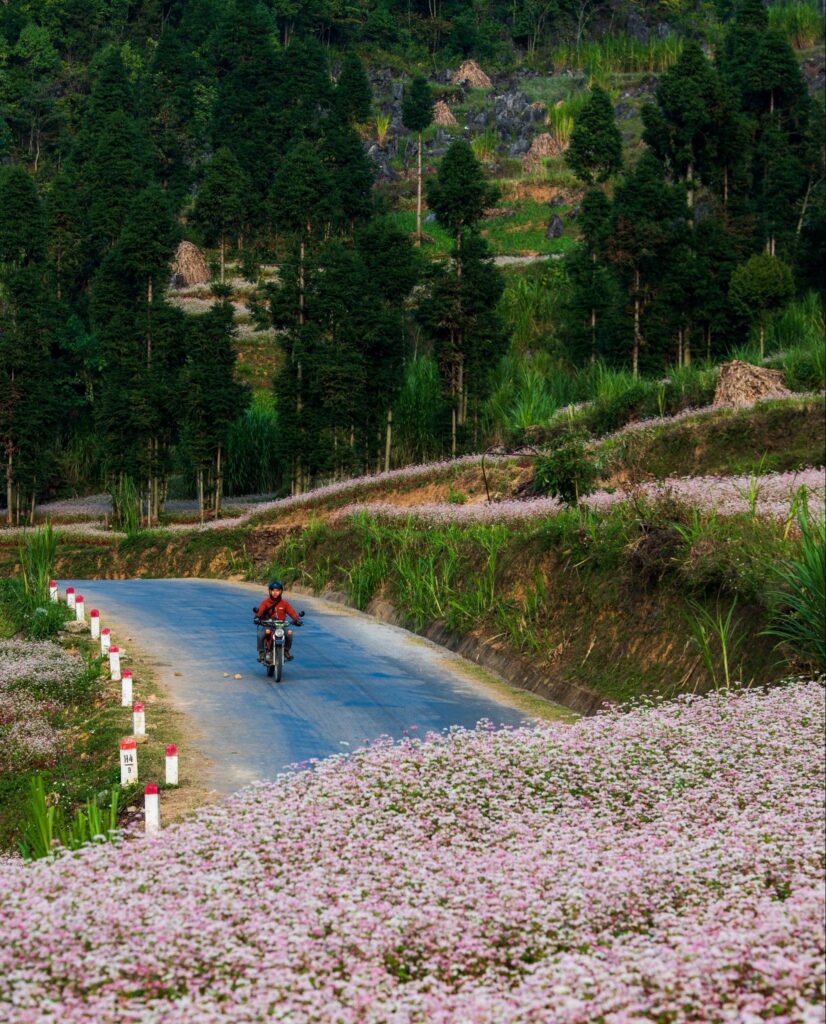
You Might Also Like
Ha Giang Weather in September: Complete Guide for Travelers
Exploring the magnificent Ha Giang Loop in September offers travelers a perfect balance of favorable[...]
Quan Ba Twin Mountains: Ha Giang’s Iconic Fairy Hills and Complete Travel Guide
The mystical Quan Ba Twin Mountains rise from the emerald valleys of Ha Giang like[...]
Vuong family mansion: the architectural marvel and cultural legacy of Ha Giang
Deep in Vietnam’s northern highlands, where mist-shrouded mountains meet terraced rice fields, stands a testament[...]
Ha Giang Loop Safety Tips: How to Ride Securely in Vietnam’s Northern Mountains
The Ha Giang Loop, with its winding mountain roads and breathtaking landscapes, offers one of[...]
The Ultimate Guide to the M-Shaped Curve on Ha Giang Loop
Vietnam’s remote northern province of Ha Giang hides a natural wonder that has captivated adventurous[...]
Most Beautiful Places to Visit in Vietnam: Essential Destinations and Insider Tips
Vietnam captivates travelers with its stunning landscapes, rich cultural heritage, and warm hospitality. From mist-shrouded[...]
Beyond the Beaten Path: Discovering Ha Giang Province in Northeast Vietnam
Ha Giang Province in Northeast Vietnam stands as one of the country’s last frontiers for[...]
Rainy season in Ha Giang: what to expect, when to go, and travel tips
Vietnam’s northern frontier reveals a different face during the rainy season, transforming Ha Giang’s limestone[...]